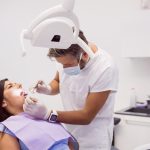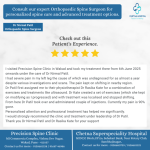Diabetes is one of the most common chronic health conditions worldwide. While people often focus on controlling blood sugar levels, managing diet, and taking medications, one aspect that is frequently overlooked is eye health. Diabetes can silently damage the eyes, often without any warning signs. This is why yearly eye exams are critical for diabetics. Early detection can prevent severe complications, including permanent vision loss.
Understanding How Diabetes Affects the Eyes
High blood sugar levels can damage the small blood vessels in the retina—the light-sensitive tissue at the back of the eye. Over time, these vessels may leak, swell, or close off entirely. This condition is called diabetic retinopathy, and it is the leading cause of vision impairment in people with diabetes.
Diabetes also increases the risk of other eye conditions, including:
- Cataracts: Clouding of the lens, which can make vision foggy or blurry.
- Glaucoma: Increased eye pressure that damages the optic nerve.
- Diabetic Macular Edema (DME): Swelling in the center of the retina, affecting sharp, detailed vision.
Even if blood sugar levels are well-controlled, these complications can still develop silently over time.
The Silent Nature of Diabetic Eye Damage
One of the most dangerous aspects of diabetic eye disease is that it often progresses without noticeable symptoms. Many people do not realize their vision is deteriorating until significant damage has occurred. This is why relying solely on how your eyes feel is not enough. Regular, comprehensive eye exams are the only way to catch problems early.
Symptoms that may appear later include:
- Blurred or distorted vision
- Dark spots or floaters in the visual field
- Difficulty seeing at night
- Colors appearing faded or washed out
By the time these symptoms appear, diabetic retinopathy or other eye complications may already be at an advanced stage.
Stages of Diabetic Retinopathy
Diabetic retinopathy progresses in four stages:
- Mild Non-Proliferative Retinopathy (NPDR): Tiny blood vessel leaks occur. Vision may remain unaffected at this stage.
- Moderate NPDR: Blood vessels swell and restrict blood flow to the retina. Slight vision changes may start.
- Severe NPDR: More blood vessels are blocked, causing significant retinal damage. Vision becomes noticeably blurred.
- Proliferative Diabetic Retinopathy (PDR): New, fragile blood vessels grow, which can bleed or cause retinal detachment, leading to severe vision loss.
Early detection through yearly eye exams is essential because treatment is most effective in the early stages, before significant damage occurs.
How Yearly Eye Exams Help
A comprehensive eye exam for diabetics typically includes:
- Visual acuity test: Measures how well you see at different distances.
- Dilated eye exam: Doctors use special drops to widen your pupils, allowing a detailed view of the retina and optic nerve.
- Optical coherence tomography (OCT): Advanced imaging to detect retinal swelling or other subtle changes.
- Tonometry: Measures eye pressure to detect glaucoma.
These exams allow ophthalmologists to detect early changes, recommend treatments, and monitor progression over time. With timely intervention, 90% of diabetes-related blindness can be prevented.
Treatment Options
Depending on the stage and type of complication, treatments may include:
- Laser therapy: Seals leaking blood vessels and prevents further retinal damage.
- Anti-VEGF injections: Reduces swelling and stops abnormal blood vessel growth in the retina.
- Surgery: In severe cases, vitrectomy may be needed to remove blood or scar tissue.
- Medications: Certain oral or injected medications may help control swelling and prevent further damage.
While treatments can be highly effective, prevention and early detection remain the most important strategies.
Lifestyle Measures to Protect Your Eyes
Along with regular eye exams, diabetics can take several steps to reduce the risk of eye complications:
- Control blood sugar levels: Consistently maintaining blood sugar within target ranges helps prevent vascular damage in the retina.
- Monitor blood pressure and cholesterol: High blood pressure and cholesterol increase the risk of diabetic eye disease.
- Healthy diet: Foods rich in antioxidants, vitamins A, C, E, and omega-3 fatty acids support eye health.
- Exercise regularly: Helps maintain overall health and blood sugar control.
- Avoid smoking: Smoking accelerates vascular damage and increases the risk of diabetic complications.
- Protect eyes from UV light: Sunglasses reduce exposure to harmful rays that can worsen cataracts.
The Emotional Impact of Vision Loss
Losing vision due to diabetes can have profound emotional and practical consequences. Daily tasks like reading, driving, and recognizing faces become difficult or impossible. Preventing vision loss through yearly eye exams not only protects sight but also maintains independence and quality of life.
Common Myths About Eye Exams for Diabetics
Myth 1: “I don’t have vision problems, so I don’t need an exam.”
Fact: Diabetic eye disease can progress without symptoms. Exams detect issues early.
Myth 2: “My blood sugar is well controlled, so my eyes are safe.”
Fact: Even well-controlled diabetes carries some risk. Regular exams are essential.
Myth 3: “Eye exams are expensive and time-consuming.”
Fact: Most exams are quick, painless, and cost-effective compared to the expense of treating advanced eye disease or blindness.
When to Seek Urgent Care
Diabetic patients should seek immediate medical attention if they notice:
- Sudden vision loss or dark shadow across vision
- Severe eye pain or redness
- Flashes of light or sudden increase in floaters
- Blurred vision that worsens quickly
Prompt care can prevent permanent damage.
Key Takeaways
- Diabetes can silently damage your eyes, even if you feel fine.
- Yearly comprehensive eye exams are essential for early detection.
- Complications like retinopathy, cataracts, glaucoma, and macular edema are preventable or treatable when caught early.
- Lifestyle measures and strict blood sugar control support eye health.
- Prevention is far easier than treatment—don’t wait for symptoms.
Conclusion
Your vision is priceless, and diabetes poses a serious threat to it. One simple exam a year can save your sight for a lifetime. Don’t wait until it’s too late. Schedule your annual diabetic eye exam today and protect your eyes from silent damage.
Remember: Early detection + timely treatment = healthy eyes for life.













